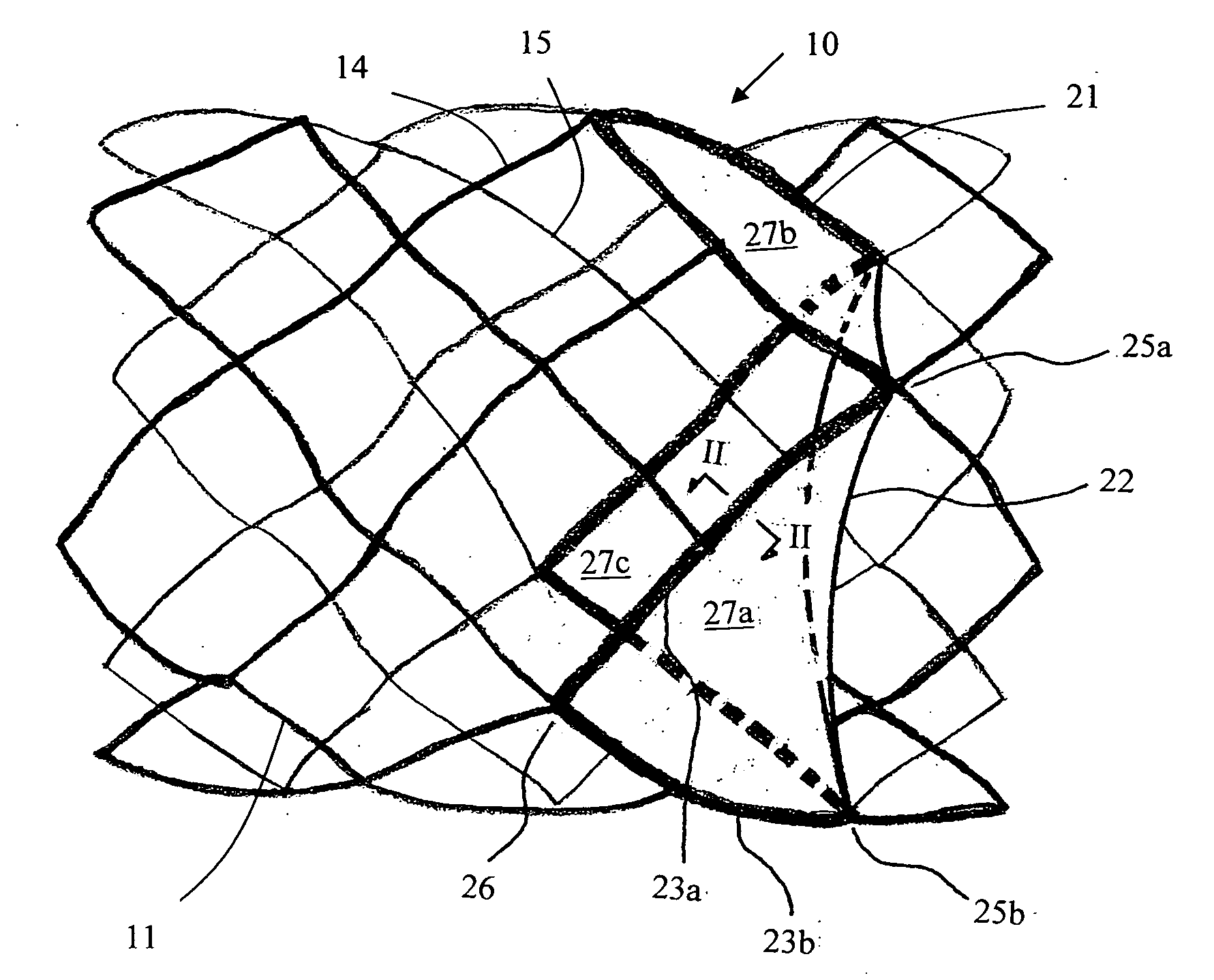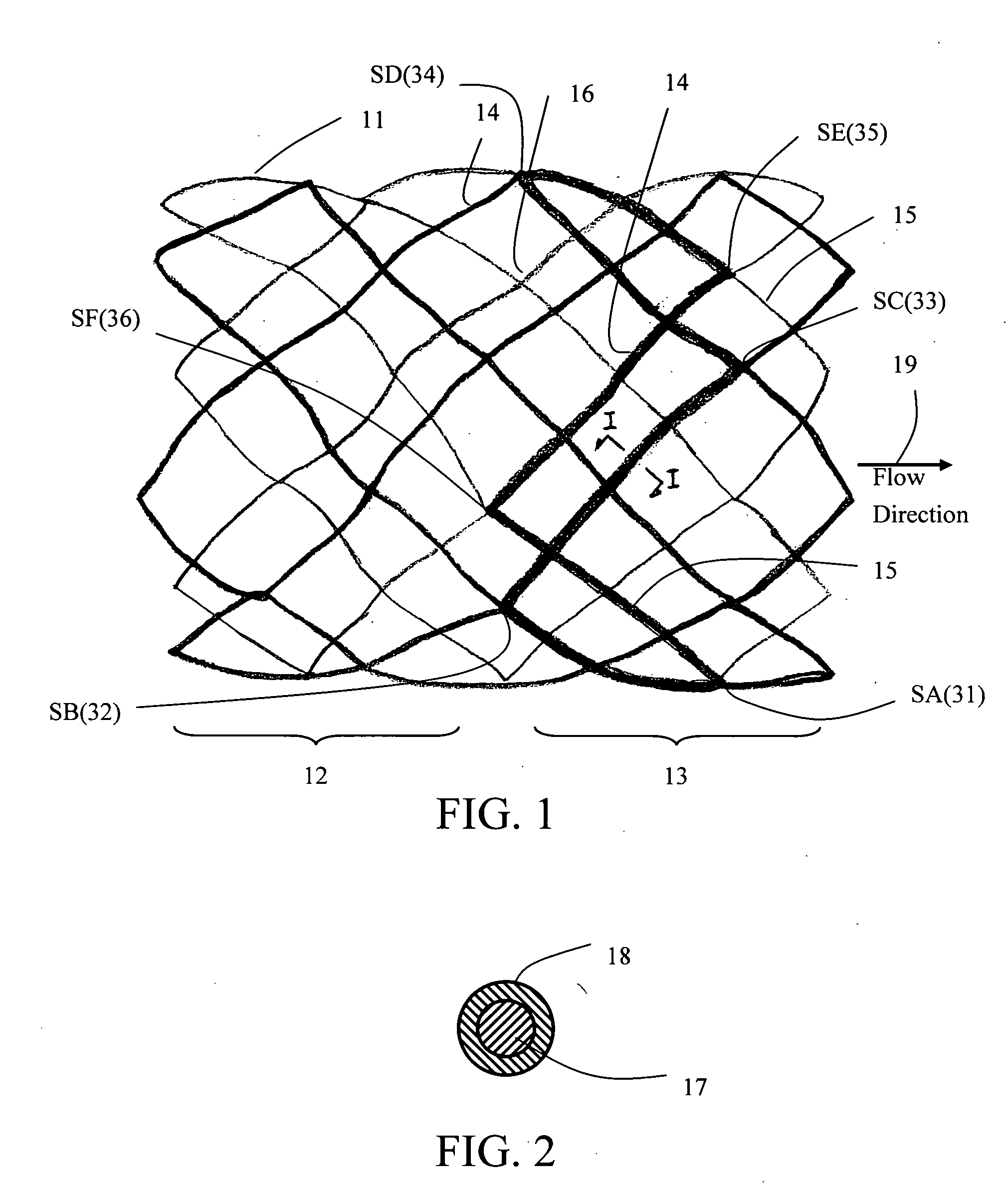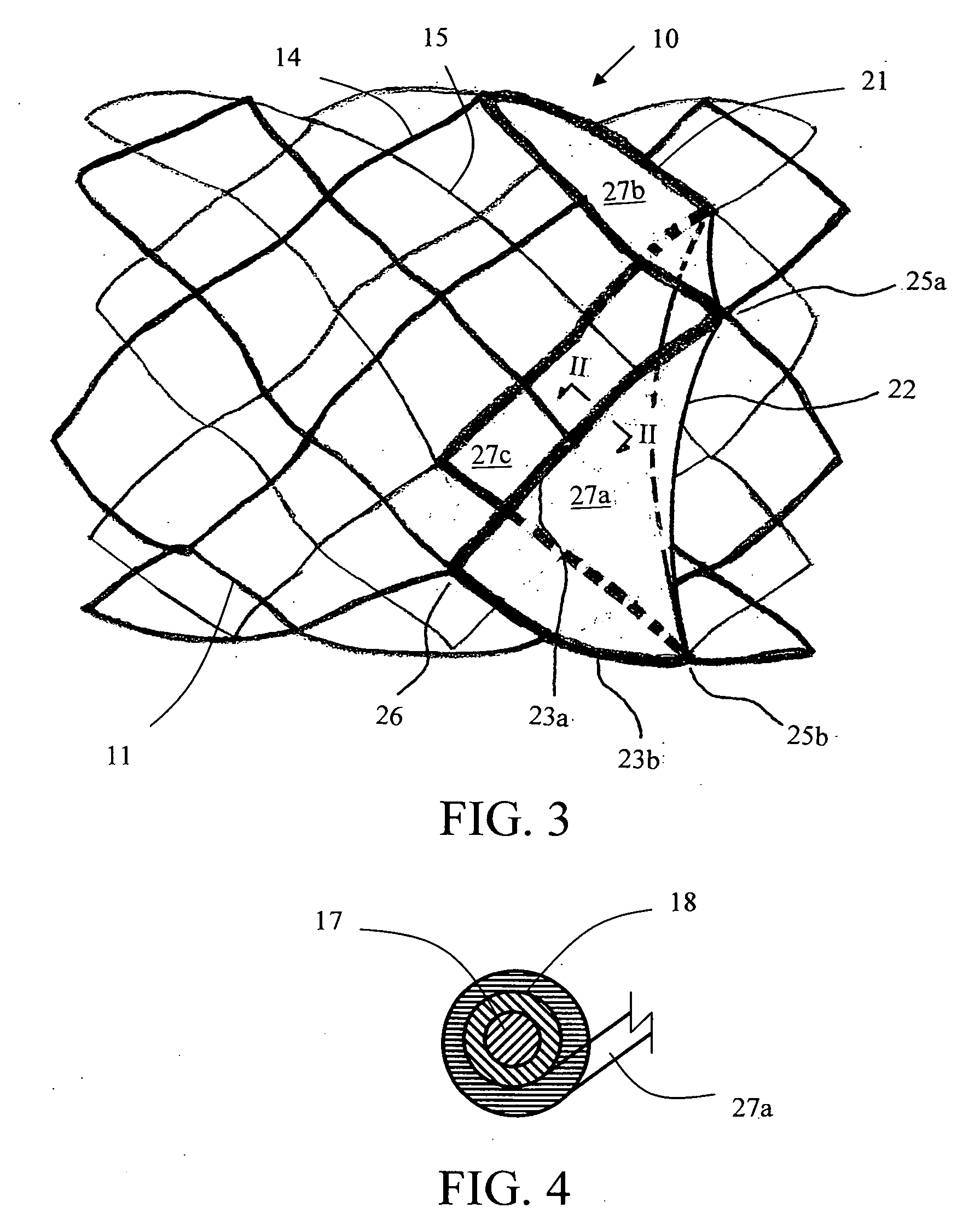Valved stent for chronic venous insufficiency
a valve and venous insufficiency technology, applied in the field of valved stents, can solve the problems of affecting the normal retrograde flow of blood, failure of valves, and malfunction of valves, and achieve the effect of minimizing turbulen
- Summary
- Abstract
- Description
- Claims
- Application Information
AI Technical Summary
Benefits of technology
Problems solved by technology
Method used
Image
Examples
example no.1
EXAMPLE NO. 1
[0066]Tissue Sheet Preparation via Decellularization
[0067]In one embodiment of the present invention, porcine pericardia procured from a slaughterhouse are used as raw materials. In the laboratory, the pericardia are first gently rinsed with fresh saline to remove excess blood on tissue. The cleaned pericardium before delipidation process is herein coded specimen-A. The procedure used to delipid the porcine pericardia is described below: A portion of the trimmed pericardia is immersed in a hypotonic tris buffer (pH 8.0) containing a protease inhibitor (phenylmethyl-sulfonyl fluoride, 0.35 mg / L) for 24 hours at 4° C. under constant stirring. Subsequently, they are immersed in a 1% solution of Triton X-100 (octylphenoxypolyethoxyethanol; Sigma Chemical, St. Louis, Mo., USA) in tris-buffered salt solution with protease inhibition for 24 hours at 4° C. under constant stirring. Samples then are thoroughly rinsed in Hanks' physiological solution and treated with a diluted cho...
example no.2
EXAMPLE NO. 2
[0070]Tissue Sheet Preparation via Crosslinking
[0071]The decellularized tissue (specimen-B) of porcine pericardia are fixed with various crosslinking agent. The first specimen is fixed in 0.625% aqueous glutaraldehyde (Merck KGaA, Darmstadt, Germany) as reference. The second specimen is fixed in genipin (Challenge Bioproducts, Taiwan) solution at 37° C. for 3 days. The third specimen is fixed in 4% epoxy solution (ethylene glycol diglycidyl ether) at 37° C. for 3 days. The aqueous glutaraldehyde, and genipin used are buffered with PBS (0.01M, pH 7.4). The aqueous epoxy solution was buffered with sodium carbonate / sodium bicarbonate (0.21M / 0.02M, pH 10.5). The amount of solution used in each fixation was approximately 200 mL for a 10 cm×10 cm porcine pericardium. Subsequently, the fixed decellularized specimens are sterilized in a graded series of ethanol solutions with a gradual increase in concentration from 20 to 75% over a period of 4 hours. Finally, the specimens are...
example no.3
EXAMPLE NO. 3
[0092]Tissue Sheet Trimming as a Leaflet
[0093]The valved stent of FIG. 5 shows two margins of attachment (23a, 23b) being sized and configured in a concave shape, the concave-shaped margins of attachment are trimmed or cut from a flat membrane sheet according to illustration of FIG. 8. FIG. 8A shows a trimmed 3-D membrane sheet that is bordered by a free margin (from point 25a to point 25b via point 24), a first margin of attachment (23a) (from point 25a to point 26 following the corresponding spline strut section), and a second margin of attachment (23b) (from point 26 to point 25b following the corresponding spline strut section). At a first specific axial distance upstream from the free margin level (line AA), say H1, the length of chord (line BB) is measured or calculated between the two points on each of the right-spiral and left-spiral splines at that H1 level. There is an angle, θ, between either the right-spiral spline (also known as lattice or strut segment) or...
PUM
 Login to View More
Login to View More Abstract
Description
Claims
Application Information
 Login to View More
Login to View More - R&D
- Intellectual Property
- Life Sciences
- Materials
- Tech Scout
- Unparalleled Data Quality
- Higher Quality Content
- 60% Fewer Hallucinations
Browse by: Latest US Patents, China's latest patents, Technical Efficacy Thesaurus, Application Domain, Technology Topic, Popular Technical Reports.
© 2025 PatSnap. All rights reserved.Legal|Privacy policy|Modern Slavery Act Transparency Statement|Sitemap|About US| Contact US: help@patsnap.com



